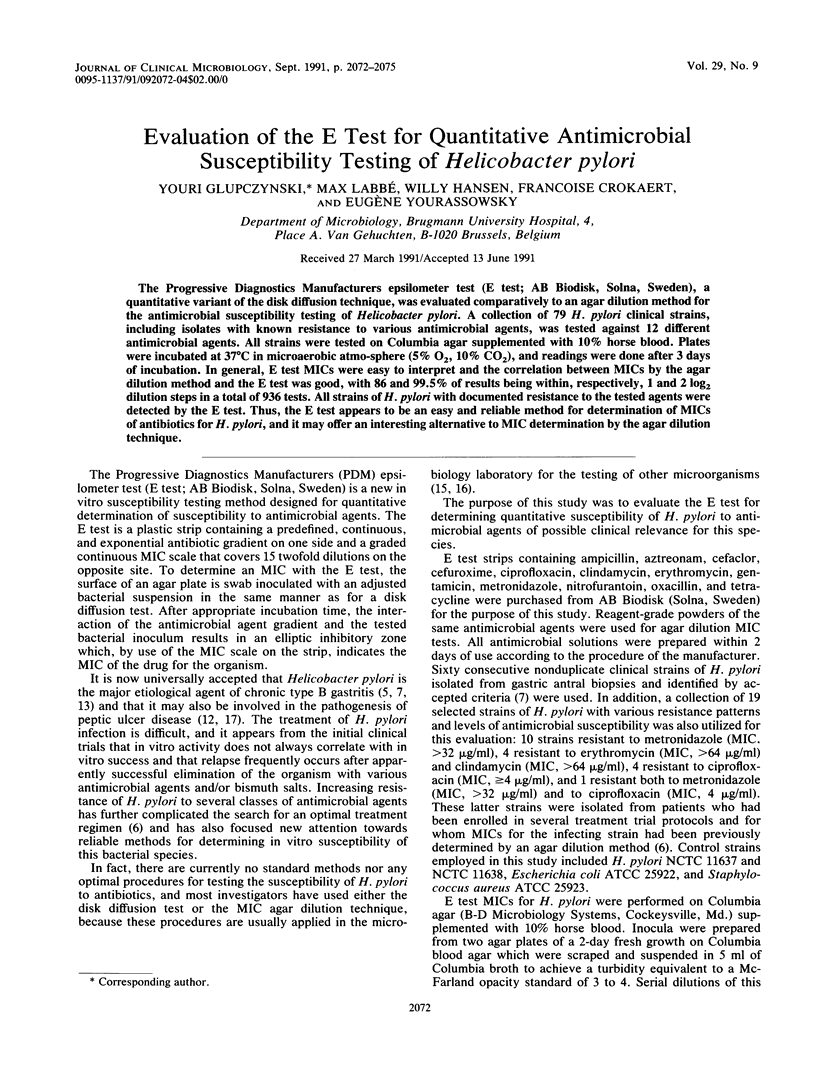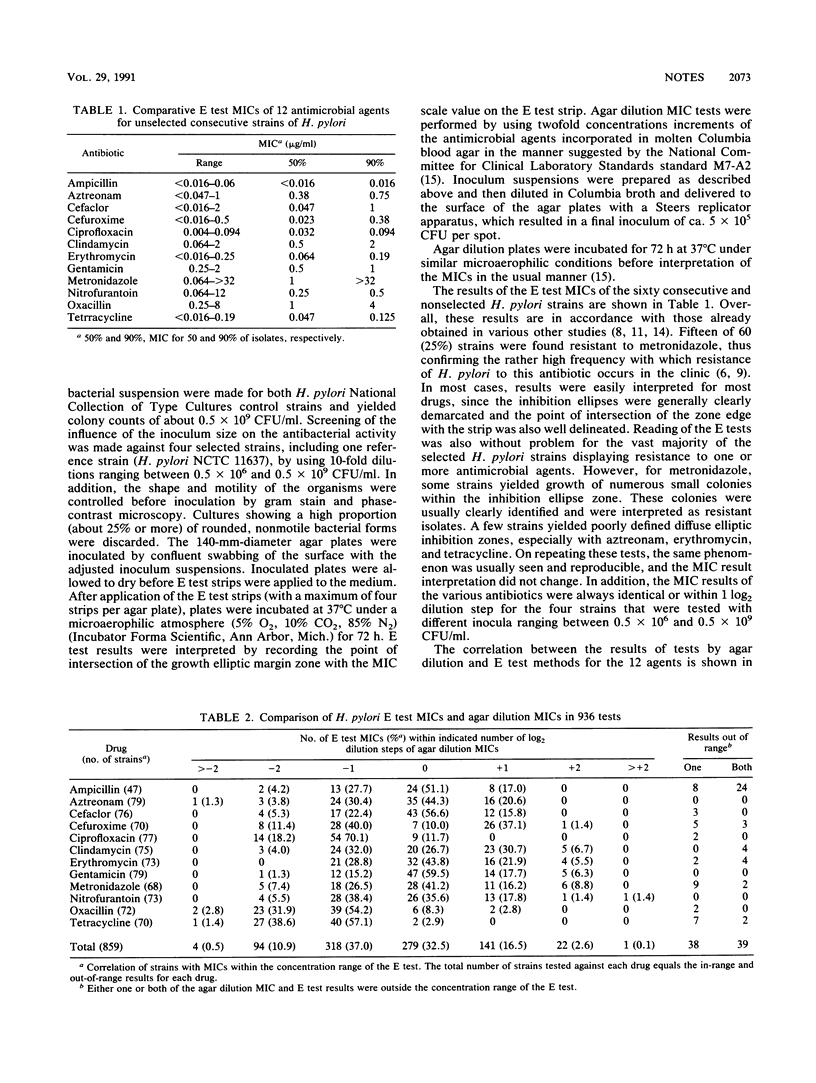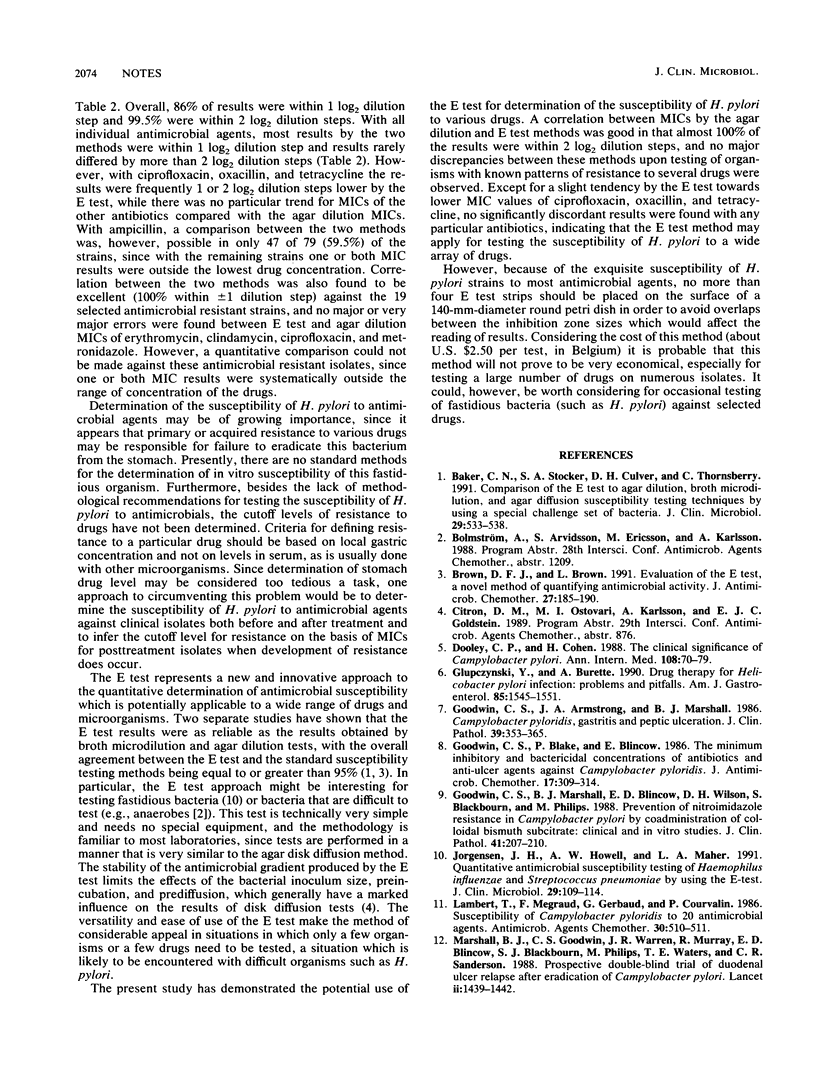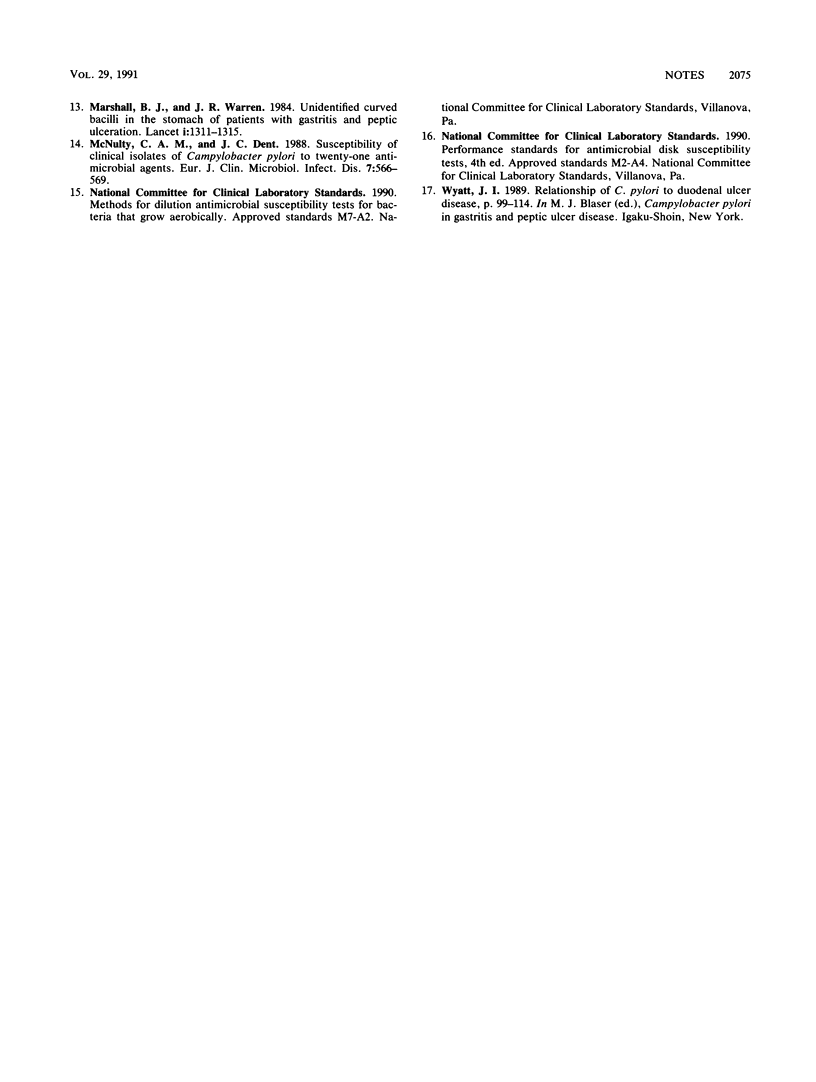Abstract
The Progressive Diagnostics Manufacturers epsilometer test (E test; AB Biodisk, Solna, Sweden), a quantitative variant of the disk diffusion technique, was evaluated comparatively to an agar dilution method for the antimicrobial susceptibility testing of Helicobacter pylori. A collection of 79 H. pylori clinical strains, including isolates with known resistance to various antimicrobial agents, was tested against 12 different antimicrobial agents. All strains were tested on Columbia agar supplemented with 10% horse blood. Plates were incubated at 37 degrees C in microaerobic atmosphere (5% O2, 10% CO2), and readings were done after 3 days of incubation. In general, E test MICs were easy to interpret and the correlation between MICs by the agar dilution method and the E test was good, with 86 and 99.5% of results being within, respectively, 1 and 2 log2 dilution steps in a total of 936 tests. All strains of H. pylori with documented resistance to the tested agents were detected by the E test. Thus, the E test appears to be an easy and reliable method for determination of MICs of antibiotics for H. pylori, and it may offer an interesting alternative to MIC determination by the agar dilution technique.
Full text
PDF



Selected References
These references are in PubMed. This may not be the complete list of references from this article.
- Baker C. N., Stocker S. A., Culver D. H., Thornsberry C. Comparison of the E Test to agar dilution, broth microdilution, and agar diffusion susceptibility testing techniques by using a special challenge set of bacteria. J Clin Microbiol. 1991 Mar;29(3):533–538. doi: 10.1128/jcm.29.3.533-538.1991. [DOI] [PMC free article] [PubMed] [Google Scholar]
- Brown D. F., Brown L. Evaluation of the E test, a novel method of quantifying antimicrobial activity. J Antimicrob Chemother. 1991 Feb;27(2):185–190. doi: 10.1093/jac/27.2.185. [DOI] [PubMed] [Google Scholar]
- Dooley C. P., Cohen H. The clinical significance of Campylobacter pylori. Ann Intern Med. 1988 Jan;108(1):70–79. doi: 10.7326/0003-4819-108-1-70. [DOI] [PubMed] [Google Scholar]
- Glupczynski Y., Burette A. Drug therapy for Helicobacter pylori infection: problems and pitfalls. Am J Gastroenterol. 1990 Dec;85(12):1545–1551. [PubMed] [Google Scholar]
- Goodwin C. S., Armstrong J. A., Marshall B. J. Campylobacter pyloridis, gastritis, and peptic ulceration. J Clin Pathol. 1986 Apr;39(4):353–365. doi: 10.1136/jcp.39.4.353. [DOI] [PMC free article] [PubMed] [Google Scholar]
- Goodwin C. S., Blake P., Blincow E. The minimum inhibitory and bactericidal concentrations of antibiotics and anti-ulcer agents against Campylobacter pyloridis. J Antimicrob Chemother. 1986 Mar;17(3):309–314. doi: 10.1093/jac/17.3.309. [DOI] [PubMed] [Google Scholar]
- Goodwin C. S., Marshall B. J., Blincow E. D., Wilson D. H., Blackbourn S., Phillips M. Prevention of nitroimidazole resistance in Campylobacter pylori by coadministration of colloidal bismuth subcitrate: clinical and in vitro studies. J Clin Pathol. 1988 Feb;41(2):207–210. doi: 10.1136/jcp.41.2.207. [DOI] [PMC free article] [PubMed] [Google Scholar]
- Jorgensen J. H., Howell A. W., Maher L. A. Quantitative antimicrobial susceptibility testing of Haemophilus influenzae and Streptococcus pneumoniae by using the E-test. J Clin Microbiol. 1991 Jan;29(1):109–114. doi: 10.1128/jcm.29.1.109-114.1991. [DOI] [PMC free article] [PubMed] [Google Scholar]
- Lambert T., Mégraud F., Gerbaud G., Courvalin P. Susceptibility of Campylobacter pyloridis to 20 antimicrobial agents. Antimicrob Agents Chemother. 1986 Sep;30(3):510–511. doi: 10.1128/aac.30.3.510. [DOI] [PMC free article] [PubMed] [Google Scholar]
- Marshall B. J., Warren J. R. Unidentified curved bacilli in the stomach of patients with gastritis and peptic ulceration. Lancet. 1984 Jun 16;1(8390):1311–1315. doi: 10.1016/s0140-6736(84)91816-6. [DOI] [PubMed] [Google Scholar]
- McNulty C. A., Dent J. C. Susceptibility of clinical isolates of Campylobacter pylori to twenty-one antimicrobial agents. Eur J Clin Microbiol Infect Dis. 1988 Aug;7(4):566–569. doi: 10.1007/BF01962617. [DOI] [PubMed] [Google Scholar]


